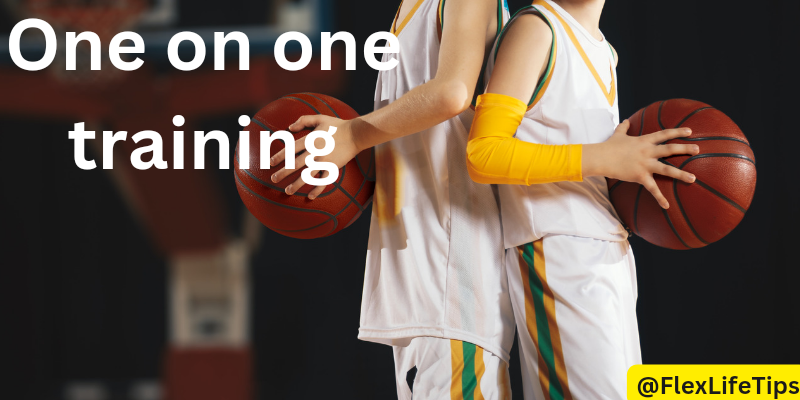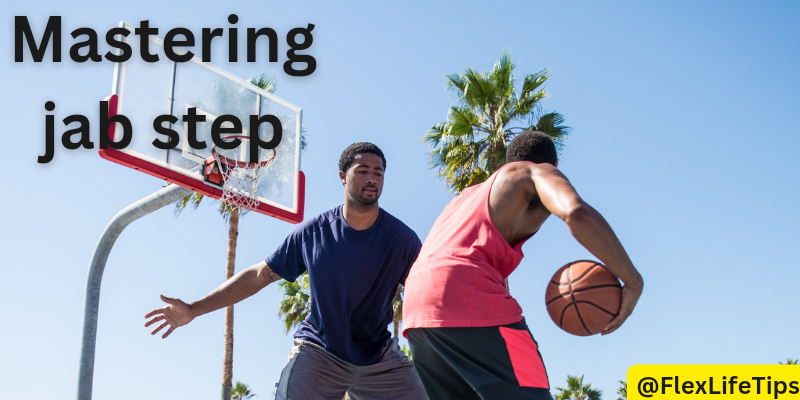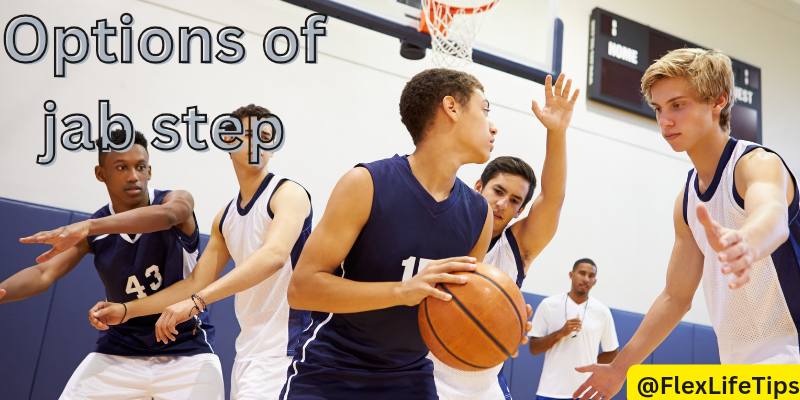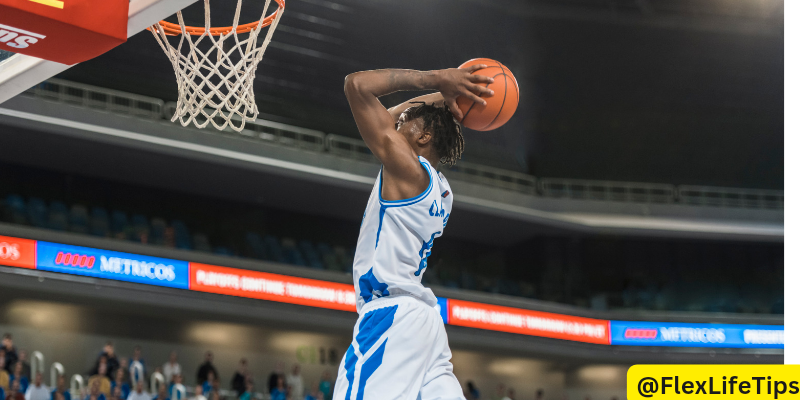Elevate your game with personalized basketball one-on-one training sessions. Master the art of reading defenders, executing the jab step, and scoring with finesse. Enhance your skills and dominate the court with expert guidance in basketball one-on-one training.
Introduction
In basketball, one-on-one training is crucial for players to improve their skills and become better at scoring points against their opponents. To succeed in one-on-one situations, it’s essential to learn how to read your defender effectively. This skill allows you to anticipate your opponent’s movements and make the right decisions to score.

Understanding the Importance of Reading Your Defender
When you’re playing one-on-one, your defender is your main obstacle. Knowing how to read them gives you a big advantage. There are three important things to look for in your defender:
- Jab Step: This is a simple but effective move to start your attack. It’s when you fake a move in one direction to trick your defender.
- Reacting to Defender’s Movement: Pay attention to how your defender responds to your jab step. Their reaction will determine your next move.
- Creating Space: By reading your defender, you can create openings to score points. It’s about finding and exploiting even the smallest gaps in their defense.
Overview of the Triple Threat Stance
The triple threat stance is a fundamental position in basketball where you’re ready to shoot, dribble, or pass the ball. It’s called “triple threat” because you have three options available to you. Here’s how it works:
- Shooting: You’re in a position to take a shot if you’re open and have a clear shot at the basket.
- Dribbling: You’re prepared to dribble the ball to move around your defender and create scoring opportunities.
- Passing: You can pass the ball to a teammate if they’re in a better position to score.
Mastering the triple threat stance gives you more options and makes you harder to defend against. It’s a fundamental skill that every basketball player should learn and practice
Mastering the Jab Step
The jab step is a crucial move in basketball that can help you create space and deceive your defender. Let’s break down the fundamentals, proper execution, and the importance of footwork in mastering this move.

Fundamentals of the Jab Step
The jab step is a simple yet effective move where you fake a move in one direction to throw off your defender. Here’s how to do it:
- Stance: Start in the triple threat stance, with your knees bent, feet shoulder-width apart, and the ball held securely.
- Weight Transfer: Shift your weight onto your front foot slightly as you prepare to jab.
- Jabbing Motion: Use a quick and decisive motion to jab your lead foot in the direction you want to fake. Keep it short and sharp.
- Body Position: Keep your body low and balanced throughout the jab step to maintain control and readiness for the next move.
Proper Execution and Technique
Executing the jab step correctly is essential for its effectiveness. Here are some key points to remember:
- Quickness: The jab step should be fast and explosive to catch your defender off guard.
- Decisiveness: Commit fully to the jab step to sell the fake convincingly.
- Read Your Defender: Pay attention to how your defender reacts to your jab step to determine your next move.
- Maintain Balance: Stay balanced during and after the jab step to be ready for your next move, whether it’s driving to the basket or taking a shot.
Importance of Footwork in Creating Space
Footwork plays a crucial role in creating space for scoring opportunities. Here’s why it’s important:
- Creating Openings: Proper footwork allows you to create openings by getting past your defender or creating enough space for a shot.
- Exploiting Defensive Weaknesses: Good footwork helps you exploit defensive weaknesses by reacting quickly to your defender’s movements.
- Maintaining Control: Solid footwork enables you to maintain control of the ball and your body, even in high-pressure situations.
- Versatility: Mastering footwork techniques like the jab step makes you a more versatile and unpredictable player on the court.
By focusing on the fundamentals, executing the jab step with precision, and emphasizing the importance of footwork, you can create scoring opportunities and outsmart your defender in one-on-one situations.
Options Off the Jab Step
Once you’ve executed the jab step, there are three main options you can consider based on your defender’s reaction. Let’s explore each option and how you can capitalize on them:

Option 1: Defender Doesn’t React
If your defender doesn’t react to your jab step, it’s a sign of a defensive weakness that you can exploit. Here’s what you can do:
- Recognizing Defensive Weaknesses: Pay attention to how your defender responds. If they don’t move or react to your jab step, they may be vulnerable to your attack.
- Driving to the Basket with Authority: Take advantage of the opening created by the lack of response. Drive aggressively towards the basket, using your speed and strength to finish with authority.
Option 2: Reacting to Defender’s Movement
If your defender reacts to your jab step by shifting their position, you’ll need to react quickly. Here’s how:
- Counter Moves: Cross-Step Technique: If your defender moves in the direction of your jab step, use a cross-step technique to change direction. Step with your opposite foot and drive in the opposite direction to catch them off guard.
- Ensuring Legal Footwork: Pay attention to your footwork to avoid traveling violations. Make sure your movements are smooth and legal to maintain control of the ball and stay within the rules of the game.
Option 3: Exploiting Defensive Backing Up
If your defender backs up in response to your jab step, it creates space for you to take advantage of. Here’s what you can do:
- Resetting to Triple Threat Position: Use the space created by the defender backing up to reset to the triple threat position. This gives you the opportunity to reassess the situation and decide on your next move.
- Capitalizing on Open Shooting Opportunities: With the defender backing up, you may have an open shooting opportunity. Take advantage of the space and take a shot if you have a clear look at the basket.
By understanding these options and being able to adapt to your defender’s reaction, you can become a more effective one-on-one player and increase your chances of scoring points on the court.
Scoring Techniques
Scoring in basketball requires a variety of skills, including finishing around the basket and shooting from different positions on the court. Let’s explore two important scoring techniques: developing ambidextrous finishing skills and incorporating pull-up jump shots into your arsenal.

Developing Ambidextrous Finishing Skills
Being able to finish with both hands around the basket is a valuable skill for any basketball player. Here’s how you can develop ambidextrous finishing skills:
- Practice Layups with Both Hands: Spend time practicing layups using your dominant hand and your non-dominant hand. This will help you become comfortable finishing with either hand in game situations.
- Work on Finger Rolls and Floaters: Practice using your fingertips to guide the ball into the basket with soft touch shots like finger rolls and floaters. Mastering these techniques will make you more versatile around the rim.
- Use Both Sides of the Basket: When practicing layups and finishing drills, challenge yourself to use both sides of the basket. This will help you develop proficiency with finishing from different angles.
- Game-like Scenarios: Incorporate game-like scenarios into your training, where you have to finish with either hand against defenders or obstacles. This will simulate real-game situations and help you become more comfortable finishing with either hand under pressure.
Incorporating Pull-up Jump Shots into Your Arsenal
Pull-up jump shots are a valuable scoring weapon that can keep defenders guessing and create space for your shot. Here’s how you can incorporate them into your game:
- Mastering the Footwork: Practice the footwork needed for a pull-up jump shot, which involves taking a quick step back or to the side to create separation from your defender.
- Developing Rhythm and Timing: Work on your shooting rhythm and timing so you can smoothly transition from dribbling to shooting in one motion. This will make your pull-up jumper more difficult for defenders to contest.
- Reading the Defense: Pay attention to how defenders are playing you and look for opportunities to pull up for a jump shot when they give you space or are off balance.
- Practice Under Pressure: Practice shooting pull-up jumpers in game-like situations with defenders closing out on you. This will help you develop the confidence to take and make these shots in clutch moments.
By focusing on developing ambidextrous finishing skills and incorporating pull-up jump shots into your arsenal, you’ll become a more versatile and effective scorer on the basketball court. These techniques will help you capitalize on scoring opportunities and contribute to your team’s success.
Conclusion and Next Steps
In conclusion, mastering the art of basketball one-on-one training requires a combination of skills, strategy, and determination. Let’s recap the key learnings from our discussion and discuss the next steps for your continued practice and improvement.
Recap of Key Learnings
- Reading Your Defender: Understanding how to read your defender is crucial for success in one-on-one situations. By paying attention to their movements and reactions, you can make informed decisions to create scoring opportunities.
- The Jab Step: The jab step is a fundamental move that can help you create space and deceive your defender. Proper execution and footwork are essential for its effectiveness.
- Options Off the Jab Step: Depending on your defender’s reaction, you have several options to consider, including driving to the basket, using counter moves like the cross step, or capitalizing on open shooting opportunities.
- Scoring Techniques: Developing ambidextrous finishing skills and incorporating pull-up jump shots into your arsenal can make you a more versatile and effective scorer on the court.
Encouragement for Continued Practice and Improvement
As you continue your basketball journey, remember that improvement takes time and dedication. Here are some next steps to help you enhance your skills:
- Practice Regularly: Dedicate time to practice your skills consistently, focusing on areas where you want to improve, such as footwork, shooting, and finishing around the basket.
- Watch and Learn: Watch games, tutorials, and demonstrations to learn from other players and coaches. Analyze their techniques and strategies to incorporate them into your own game.
- Seek Feedback: Don’t be afraid to seek feedback from coaches, teammates, or mentors. Constructive criticism can help you identify areas for improvement and refine your skills.
- Stay Positive and Persistent: Basketball is a challenging sport, but with perseverance and a positive mindset, you can overcome obstacles and continue to grow as a player.
By applying these principles and staying committed to your development, you can become a more skilled and confident basketball player. Remember to enjoy the process and celebrate your progress along the way. Keep working hard, and success will follow.
FAQs about Basketball One-on-One Training
How do you train basketball alone?
You can train basketball alone by focusing on fundamental skills such as dribbling, shooting, passing, and footwork. Utilize drills and exercises that target these areas, and incorporate simulated game situations to improve decision-making and basketball IQ.
What is the best way to practice basketball?
The best way to practice basketball is to have a structured plan that includes a variety of drills focusing on different aspects of the game. This can include shooting drills, ball-handling drills, defensive drills, and conditioning exercises. Consistency, focus, and intensity are key elements to effective practice.
How can I practice basketball defense alone?
While practicing defense alone may not fully simulate game situations, you can work on defensive footwork, stance, and agility drills. Use cones or markers to simulate offensive players and practice sliding, shuffling, and staying low in a defensive stance. You can also work on defensive anticipation and reaction by shadowing imaginary offensive moves.
What to do in basketball training?
In basketball training, focus on improving individual skills such as shooting, dribbling, passing, and defense. Incorporate game-like scenarios to simulate real-game situations and work on decision-making under pressure. Additionally, include strength and conditioning exercises to improve overall athleticism and endurance.
How can I practice basketball alone without a hoop?
Even without a hoop, there are many ways to practice basketball skills. You can work on dribbling drills, ball-handling exercises, and agility drills. Use a wall to practice passing and catching techniques. Additionally, focus on improving strength, speed, and agility through various bodyweight exercises and conditioning drills.
How many hours should a basketball player train?
The number of hours a basketball player should train can vary depending on their level of skill, goals, and physical conditioning. Generally, high-level players may train several hours a day, including skill work, strength and conditioning, and game preparation. However, it’s important to balance training with rest and recovery to prevent overuse injuries and burnout. Quality of training sessions is often more important than quantity.